Goodison Avenue — Everton’s Celebrity Street
Between the 1930s and 1950s, on this modest terraced cul-de-sac backing onto Goodison Park, you could have chanced upon Everton stars of their day going about their daily business
With fellow Toffee Jamie Yates, I share a penchant for Stella Street, the cult 1990s BBC comedy sitcom, set in the unremarkable London suburb of Surbiton. On the eponymous street, a host of A-list celebrities from stage, screen and the music industry cohabit in a surreal and often hilarious manner. John Sessons and Phil Cornwell (plus Ronni Ancona in the film spin-off) played the various roles, making it almost credible that ‘Mick and Keef’ would run a corner shop, while Michael Caine would have chats with Jack Nicholson and Al Pacino at the front gates of their modest terraced properties.
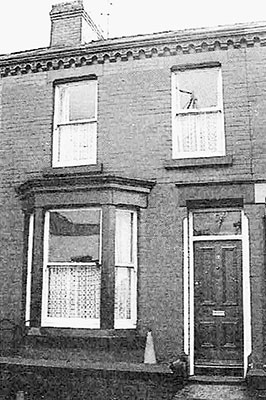
Dixie Dean's old home on Goodison Avenue
Wonderful stuff, but impossible, no? And yet If you’d paid a visit to Goodison Avenue, a modest terraced cul-de-sac backing onto Goodison Park, between the 1930s and 1950s, you could have chanced upon the likes of Everton’s Dixie Dean, Billy Cook, Jimmy Dunn, Jimmy Caskie, Harry Cooke, Tommy White, Andy Tucker, Theo Kelly, Jackie Grant, Cyril Lello, Tommy Clinton and Harry Leyland going about their daily business — including making the very short commute to their place of work (or the Winslow, for a pint).
Accessed off Goodison Road, to the rear of the Park End stand, the non-adopted (private) street was lined by terraced houses built in the late 19th Century. Owning a good number of the properties, Everton would often accommodate new signings there until such time that they obtained alternative lodgings in the area.
Geoff Dean, son of Dixie, recalled life there in a mid-1990s interview:
‘I was born at 12 Goodison Avenue, which was a club house in 1935, seven years after dad got his 60 League goals in a season. The house faces the new Park Stand and I stopped there one day to let the owners know whose house it was. But back in those days, dad was living there with mum, Ethel, and my older brother Bill had already been born. I was born the day after Everton beat Tottenham in a league match and the Liverpool Echo reported that my first words were: “I'm sorry I wasn't there to see you win yesterday, dad!”’
The Deans vacated the premises after Dixie left the Toffees, shortly before the war, moving to the Wirral. But it wasn’t just soccer stars and backroom staff living in the shadow of the stadium. The more enterprising residents would charge Everton match-goers a few pence to safely store their bicycles in their backyards on a Saturday afternoon. Among the non-footballing residents was Vera Hickey (neé Lobley), born in 1931. I was lucky to chat with her about growing up in the shadow of a famous stadium:
‘I was born and lived at number one until I married at 29. I have so many good memories. When I was a little girl Jimmy Dunn lived at 10 and Dixie Dean was at 12. Once, I had measles and I couldn’t go to young Billy Dean’s birthday. Then there was a knock at the door - it was Dixie’s wife with a little bracelet for me. At 18 was Mrs Wallace who took all of the Scottish players in. She was my godmother. Bob McMurray came from Scotland and he’d come and see me – I was his “little darling”. And there was Cecil Wyles and his wife Eileen.
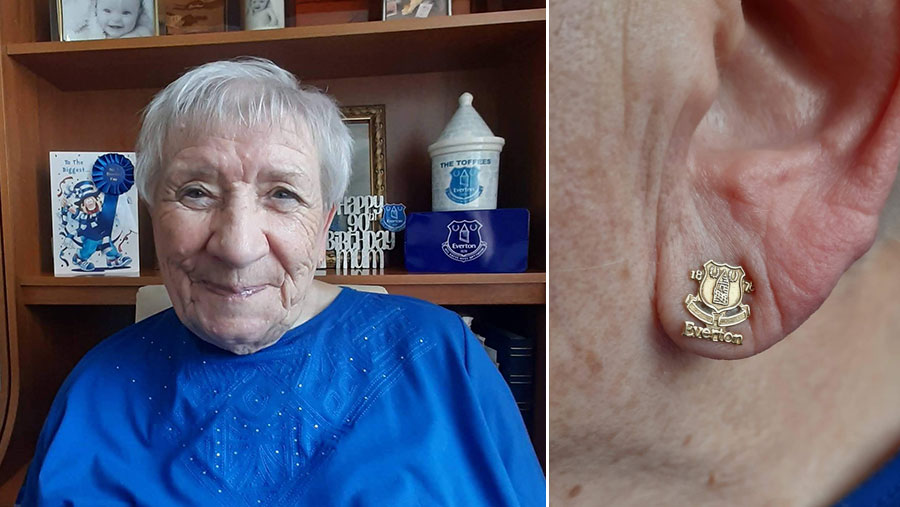
Vera Hickey who grew up on Goodison Avenue
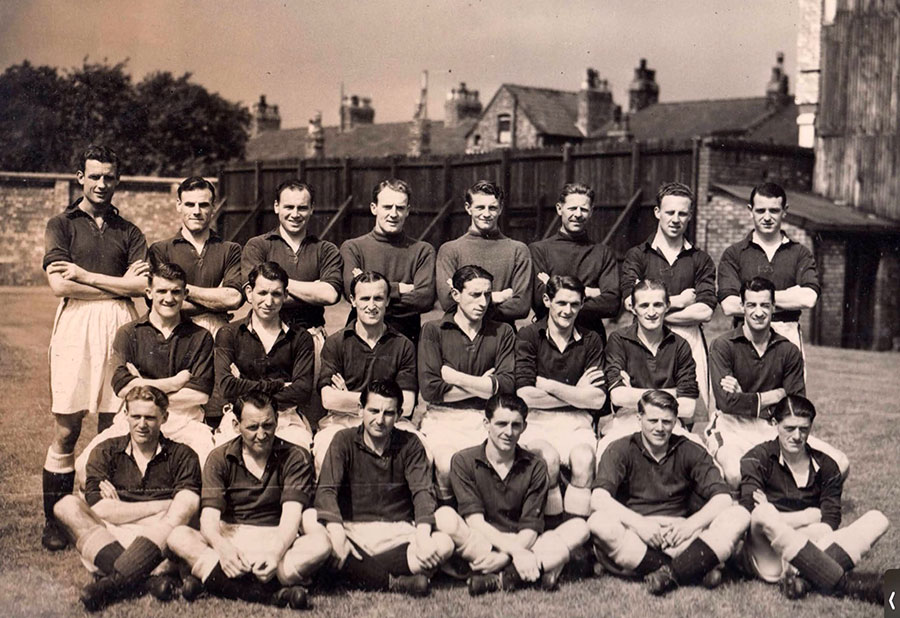
Everton squad circa 1950 on the training ground with Goodison Ave in background
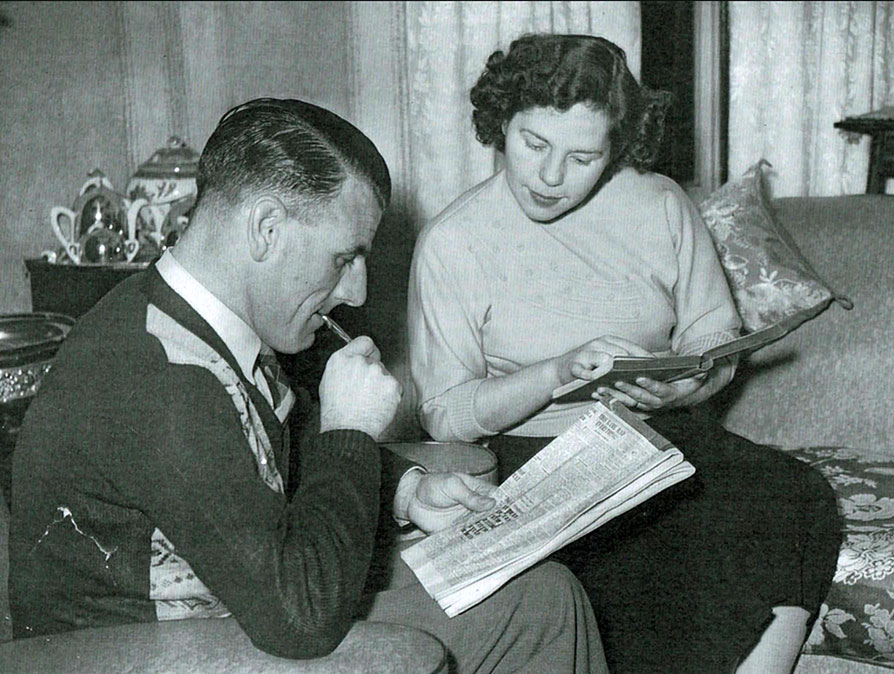
The Lellos at home on Goodison Avenue in the 1950s
‘You could play out on the street as everyone knew each other and looked out for one another. Once, I slipped, and a pile of coal fell on my foot. Tommy White was cycling down the road, coming home from work, and he carried me in to my mum. She ran to the ground in a panic, knocked on the door at the players’ entrance and asked Harry Cooke to take a look. I was christened at St Lukes – and from St Luke’s was taken to the ground as my dad, Robert, had two shares and two seats in the Bullens Road stand.’
As one of the best-appointed stadiums in the land, Goodison Park was a shoo-in when the football authorities were selecting venues for 1966 World Cup group stage matches. More than that, it was earmarked to play host to a quarter final and one of the semi-finals — sharing that honour with Wembley. Alterations costing £111,400 (of which £47,280 was covered by a government grant, topped up by a £11,820 loan) were required to bring up Goodison to the standard required. The Bullens Road stand had an extended ‘umbrella’ roof added (to give coverage from the elements for those in the Paddock), the dug-outs were refreshed, a new tunnel was built and five yards were added to the pitch length. The biggest ‘casualty’ of the upgrades was Goodison Avenue, or half of it, to be more accurate.
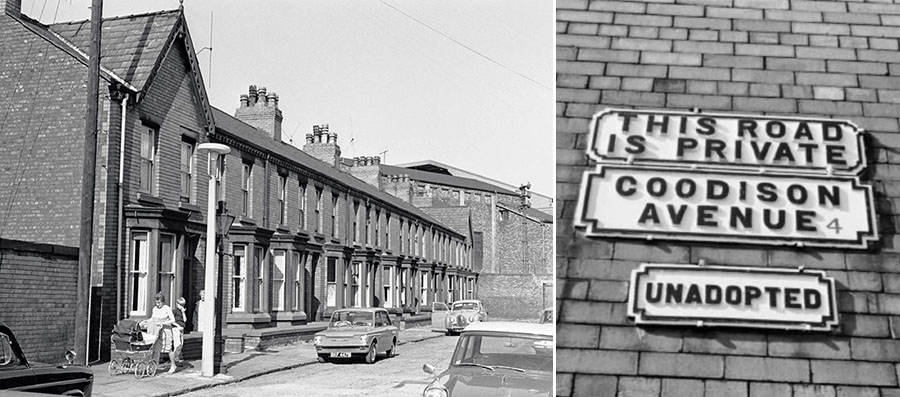
Left: Goodison Ave early 1960s before north side demolition; Right: Goodison Ave signs (image by Charlie Owens)
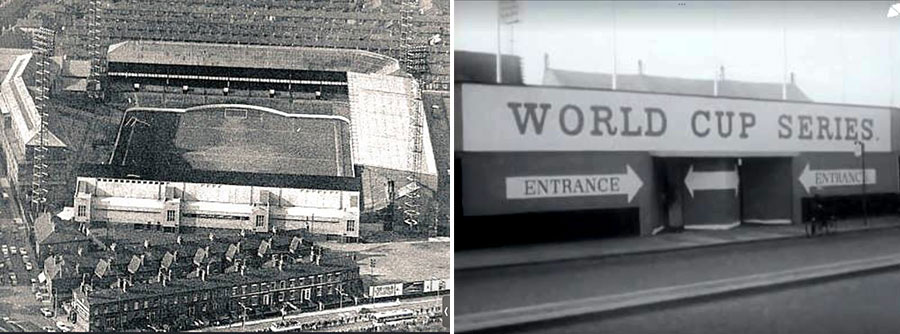
Goodison Park in 1966, ready for the World Cup finals
The dozen houses on the north side (odd numbers) — which abutted the 1908 Park End stand — were to be sacrificed in the autumn of 1965 to improve access to and space within the stand (500 more seats, additional toilets and improved catering provision). Also at risk were 14 houses on Walton Lane, which had been condemned as unfit for habitation a decade earlier. With proposals announced early in 1965, it was not plain sailing as the Housing Committee vetoed the initial proposals. The impasse was eventually breached, helped by John Moores, Everton FC’s major shareholder, underwriting the £30,000 bill to rehouse the occupants, including Vera’s mother, re-accommodated elsewhere, rather than the burden fall on the city’s Housing Committee.
The small players’ training ground, accessible via gates at the end of the cul-de-sac, had a pavilion erected on it for hospitality during the tournament. It became surplus to requirements after Bellefield was redeveloped in 1966 and eventually became car parking space.
By the late 1950s, players were living further out from Goodison (such as in Aintree, Huyton and Lydiate), but some club stalwarts never left – notably Cyril Lello and Tommy Clinton. The Lellos had a visit from Howard Kendall and the Everton team in 1985, shortly after they secured the League title.
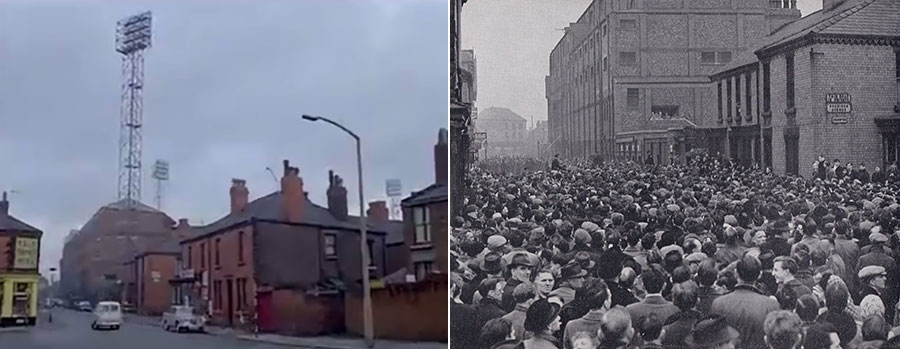
Left: Goodison Road in the mid-1960s; Right: Goodison Road circa 1960 with Goodison Avenue entrance visible
Goodison Avenue works, 1965 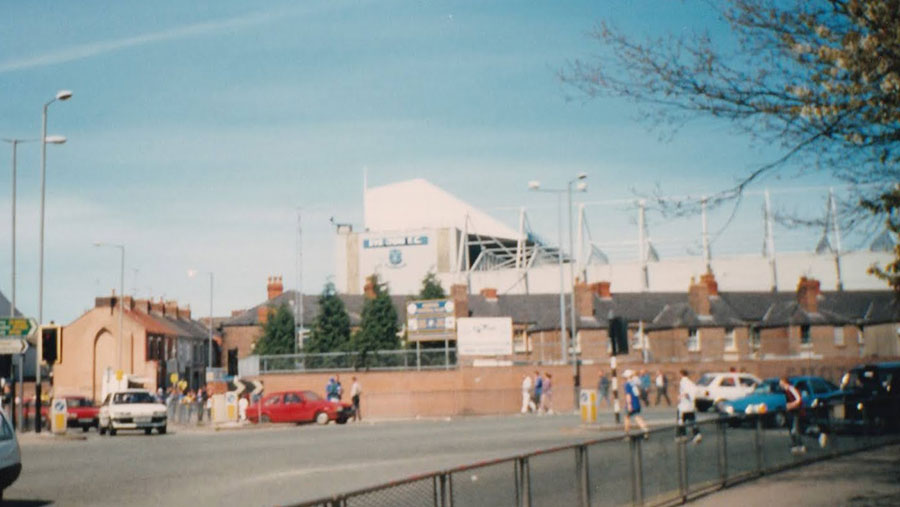
A view circa 1990 across Walton Lane (photo by Graeme Holmes)
Demolition of most of the remaining houses in the mid-1990s was linked to the construction of the present Park End stand and additional car parking provision. Before they faced the bulldozer, the houses enjoyed a brief period of unobstructed views of the pitch, after the old Park End stand was razed to the ground. Some supporters, and local journalist Paddy Sheehan, managed to get invited into the houses to watch the turmoil-ridden end to the 1993/94 season, which saw a dramatic last-day relegation escape.
The first few houses of Goodison Avenue survived a few more years, with the corner unit (number two) being used as a matchday programme shop. They finally disappeared around the turn of the century, with the space now used for car parking and the Fanzone. The only evidence of the street now is the turn-off from Goodison Road into the car park.
A rare post-2000 mention of the cul-de-sac I came across was from The Stage magazine (a showbusiness publication), in 2004, in which a group called Goodison Avenue was reviewed, appearing at a showcase event in Doncaster. Sadly, the name seems to have been taken from a band member, rather than being a nod to Everton’s very own celebrity street.

The old programme shop and remaining buildings in late 1990s before demolition work (right)
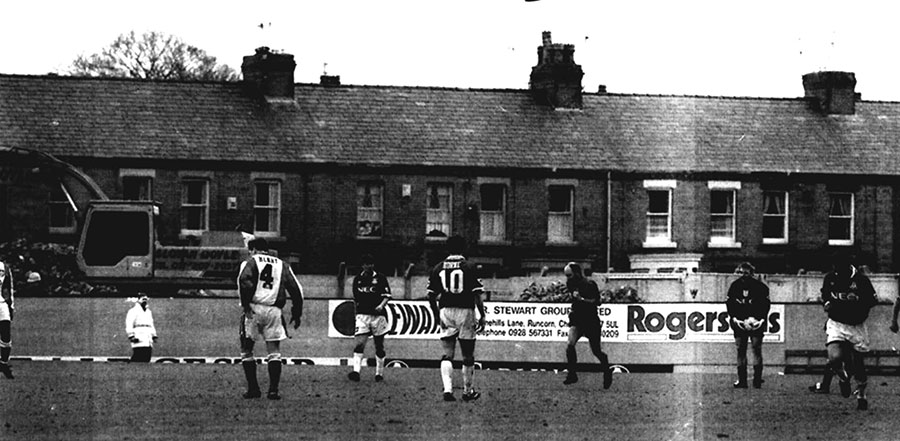
The demolition of the old Stanley Park end stand gave the residents of Goodison Ave a perfect view of the pitch
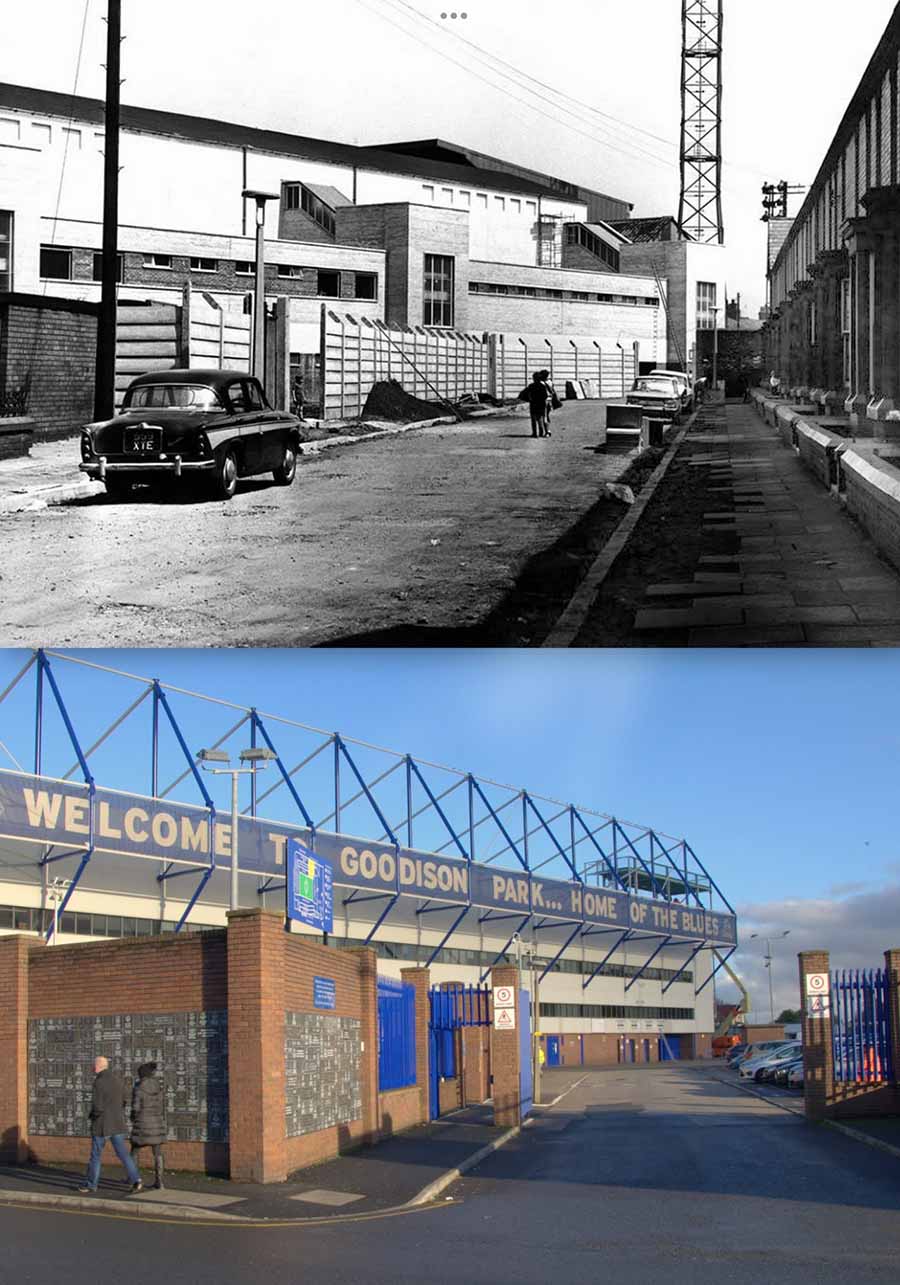
Goodison Ave after partial demolition in 1965 and then in 2016
Credits:
Vera Lobley
Billy Smith
The Lello family
Graeme Holmes
bluecorrespondent.co.uk
evertoncollection.org.uk
Liverpool Echo
Liverpool Daily Post
The Stage
Everton matchday programme
Twitter: @oldpicposter, @ALANMYERSMEDIA and Liverpool: Now and Then (@keithjones84)
Reader Responses
Selected thoughts from readersEither no responses have been submitted so far to this article or previous submissions are being assessed for inclusion.
Add Your Thoughts
Only registered users of Evertonia can participate in discussions.
Or Join as Evertonia Member — it takes just a few minutes and will allow you to post your thoughts on artices across the site.

